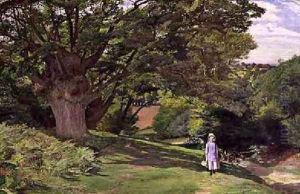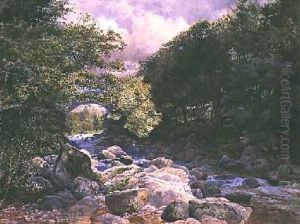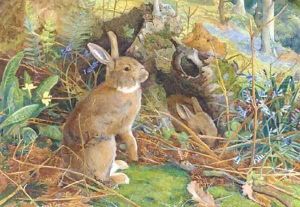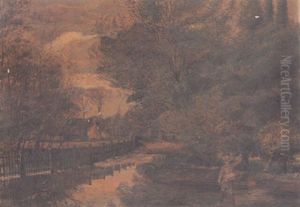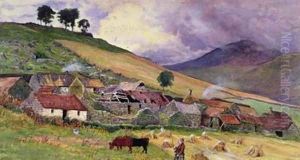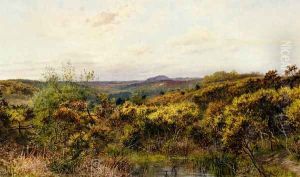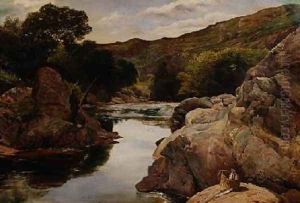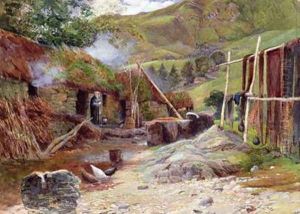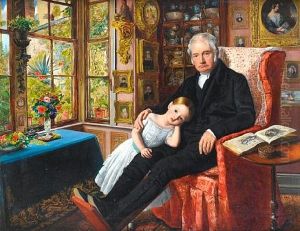William Henry Millais Paintings
William Henry Millais (1828-1899) was a British painter and illustrator, remembered primarily for his landscapes and wildlife subjects. Though less widely known than his brother, Sir John Everett Millais, a prominent figure in the Pre-Raphaelite Brotherhood, William's work holds its own significance in the Victorian art world. His approach to art, while influenced by the Pre-Raphaelite movement, particularly in its early stages, diverged towards a more conventional representation of nature, focusing on meticulous details and realistic settings.
William was born in Southampton, England, into a family that was supportive of the arts. His brother, John Everett Millais, would go on to become one of the founding members of the Pre-Raphaelite Brotherhood, a group that sought to reform British art by rejecting what it considered the mechanistic approach fostered by Mannerist artists after Raphael and Michelangelo. While William was not directly involved with the Brotherhood, the movement’s emphasis on detailed observation of nature and complex compositions influenced his work.
Throughout his career, William Henry Millais produced a body of work that celebrated the British countryside, its flora and fauna. His paintings often featured animals within their natural habitats, painted with a keen eye for detail and a deep appreciation for the landscape. Unlike the symbolic and mythological themes favored by the Pre-Raphaelites, William’s subjects were drawn from the observable world around him. He excelled in capturing the nuances of light and shadow, the textures of fur and feather, and the varied moods of the seasons.
Despite his talents and the quality of his work, William Henry Millais did not achieve the same level of fame as his brother. His preference for traditional subjects and his avoidance of the literary and mythological narratives that fascinated his contemporaries may have contributed to this. Yet, his contributions to Victorian art, particularly in the realm of landscape and wildlife painting, have been recognized and appreciated by art historians and collectors. His works are held in several public and private collections, serving as a testament to his skill and dedication to capturing the beauty of the natural world.
William Henry Millais' legacy is that of a gifted artist who, while operating in the shadow of his more famous brother, developed a distinctive voice that celebrated the natural environment. His work provides a valuable insight into Victorian attitudes toward nature and the environment, reflecting a period when the British landscape was undergoing significant changes due to industrialization and urbanization. Millais' paintings remain a tribute to the enduring beauty of the natural world and the importance of preserving it for future generations.
